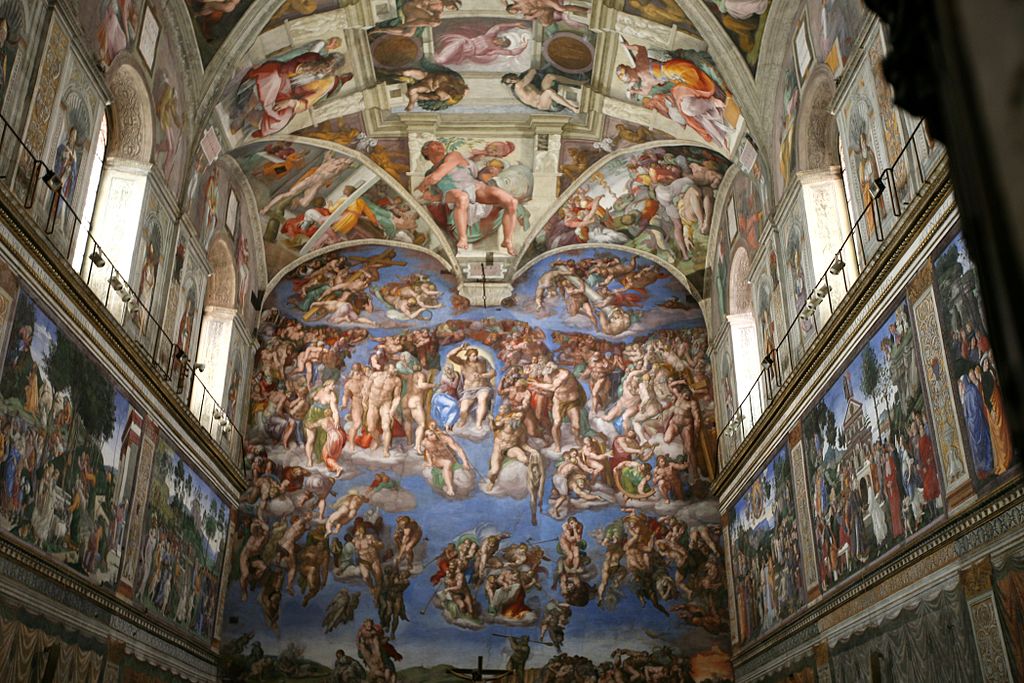
VATICAN CITY—The Vatican revealed a closely kept secret Thursday: The Sistine Chapel’s precious frescoes were starting to turn white from the air pollution caused by so many visitors passing through each day to marvel at Michelangelo’s masterpiece.
Officials first noticed the whitening patina in 2010 and immediately launched an investigation. The damage wasn’t visible from the ground, but close inspection showed pockets of frescoes covered with a powdery patina that caked them like cracked sugar icing.
“The concern was not just esthetic but also the danger for the integrity of the paintings,” Vittoria Ciminio, head of the Vatican Museums’ conservation department, told a conference Thursday.
While the exact origin is still unknown, officials said the powder consisted of calcium carbonate and calcium bicarbonate deposits, believed to have formed from the increasing levels of carbon dioxide and humidity passing through the chapel’s porous plaster walls.
The patina was easily removed and no permanent damage occurred, said Ulderico Santamaria, who heads the museums’ restoration laboratory. But officials warned that such calcium buildup can do lasting damage if left untreated.
Vatican officials have said the Sistine Chapel’s new air conditioning and air filtration system, inaugurated this week, would prevent potential damage from the air pollution brought in by crowds nearing 6 million this year. But they never revealed that damage was already underway and that the new system was aimed at preventing further problems.
Santamaria said studies showed that the patina was superficial, and hadn’t bleached or mixed in with the actual colours, meaning the frescos themselves weren’t harmed. He said the patina wasn’t found on all frescoes, but was concentrated in some areas of the chapel, presumably where there was greater absorption of water from the humid air or condensation inside the walls.
“The state of the frescoes is good, and this whitening was reversible,” he said.
Officials acknowledged that the major cleaning of the frescoes completed in 1994—which removed centuries of built-up candle wax, dirt and smoke—probably removed a barrier between the frescoes and the environment that allowed the whitening to take place. But they said the main culprit was the sheer number of human beings who cram into a tiny shoebox-shaped space that has limited natural air flow.
The head of the Vatican Museums, Antonio Paolucci, has ruled out closing the Sistine Chapel to protect the frescoes, but has said that 6 million visitors a year is the limit.
To allow crowds to continue to admire Michelangelo’s 500-year-old “Last Judgment” behind the altar, the Vatican has installed sensors to monitor humidity, dust and carbon dioxide levels, as well as closed-circuit TV cameras to count the number of visitors so that the new cooling and ventilation system can adjust itself accordingly.
The previous air conditioning system, installed in the early 1990s, was designed when only about 2 million people visited each year.